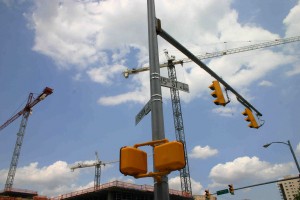Act 117: The Amended PA Mechanics Lien Law

In July 2014, Tom Corbett, governor of Pennsylvania, signed Act 117 that allows construction loans secured by an open-end mortgage where at least 60% of the proceeds are “intended to pay or used to pay” all or part of the “costs of construction” will have lien priority ahead of any filed mechanics lien claims, even when the visible commencement of work was prior to the recordation of the open-end mortgage.
Why is This Important to Pennsylvania Contractors?
This ruling has an immediate impact on the industry within the state. Contractors in Pennsylvania are pleased with the amendment, which was designed to assist contractors, suppliers and subcontractors in getting payment by providing a security interest in the title to a property in which they have provided services or materials. The original Mechanics’ Lien Law, 49 P.S.1101, stated that although a mechanics lien for construction of improvements generally has priority as of the date of visible commencement of work, it was subordinate to an open-end mortgage “the proceeds of which are used to pay all or part of the cost of completing erection, construction, alteration or repair of the mortgaged premises…”

The amendment, which clarifies the open-end construction loan mortgage priority, goes into effect on September 7, 2014 and reversed the Pennsylvania Supreme Court’s 2012 “Kessler” ruling of the original law, which placed significant changes of the law into effect in regards to construction loans where any visible commencement of work on the project had commenced before the recording of the construction loan’s open-end mortgage. This decision was interpreted to mean that if visible commencement of work on a project began prior to the recording of the open-end mortgage and any loan advances were made for anything other than hard construction costs, any unpaid contractors or subcontractors who filed mechanics’ liens later would have priority over the liens in place from the construction loan advances.
Additional Enhancements to the Law
Revisions within the law also include a broad definition of “costs of construction” which defines all expenses and reimbursements as they relate to erection of the structure, alteration, construction, repair, impact fees and other construction-related expenses, and applies to mechanics’ liens executed after September 7, 2014, including any liens relating to construction of an improvement which has visible commencement of work prior to the effective date. Some of these costs included in the definition are:
- Insurance
- Inspections
- Permits
- Testing
- Finance costs
- Leasing commissions
- Surveys
- Legal fees
- Consultant fees
- Engineering fees
What Does This Mean?
The implications of this law are huge. With the new provisions under the law, any existing construction loans where visible commencement of work started before the recordation of the mortgage will not have priority over the lien of the construction mortgage as long as the 60% test is met. This means that any open-end mortgages for construction loans where the revenues will be used for anything other than hard costs can move to the front of the line. This also give lenders, property owners, contractors and title insurers more leverage in making sure those tests are met based on the construction loan budget. The law applies to all mechanics’ liens after September 7, 2014.
